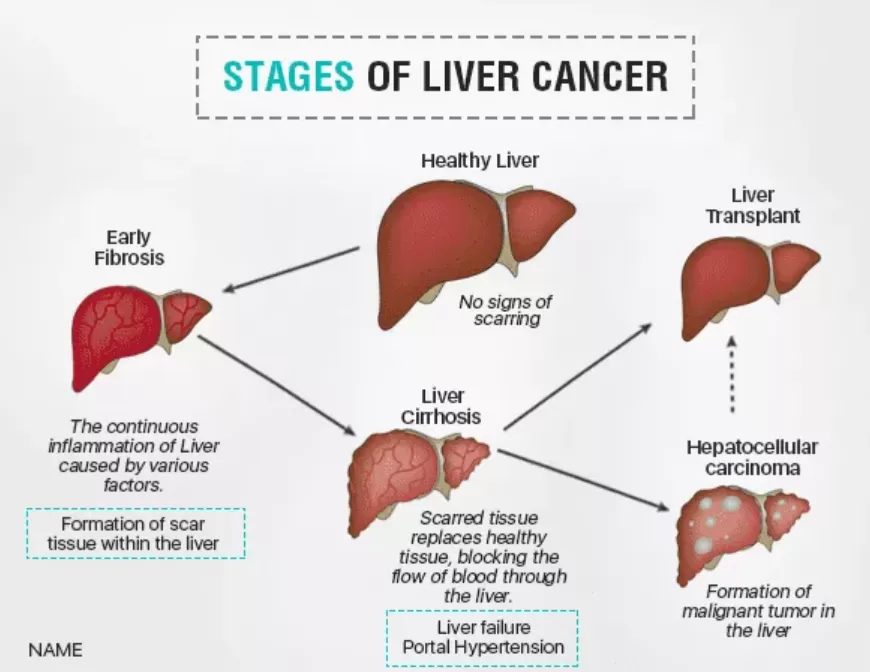Liver cancer is one of the toughest nuts in oncology to crack. The liver, with its complex anatomy and essential function, is not only hard to reach surgically but also prone to complications. For decades, traditional surgical methods were the only options, frequently necessitating big incisions, extended hospital stays, and a recovery period full of potential complications.
But today, a tectonic shift is occurring in how we treat liver cancer. Thanks to robotic technology, surgeons can now make minuscule cuts and operate with extreme precision. In cities like Ahmedabad, this change is led by legendary experts like Dr. Nitin Singhal who combine robotic advancements with decades of clinical experience. For patients, this translates to quicker recoveries, less pain, and exponentially improved results.
Liver cancer frequently progresses silently. Once many patients are diagnosed, the disease has already advanced. Tiredness, abdominal discomfort, yellowing of the skin, and weight loss are typical symptoms but tend to present late. This is what makes early detection and treatment so important.
There are multiple types of liver cancer, the most frequent of which is hepatocellular carcinoma, or HCC. Others are intrahepatic cholangiocarcinoma and metastases from other organs. No matter the variety, successful treatment requires an approach that is as focused as possible and causes as little collateral damage to healthy tissues as possible—something robotic surgery achieves with impressive results.
Conventional open surgery for liver cancer often involves extensive incisions that can span across the abdomen. The liver’s dense blood supply makes such procedures risky, with a heightened chance of bleeding and postoperative complications. Patients usually face:
For many patients, especially those with weakened immune systems or pre-existing conditions, these factors can make traditional surgery daunting. This is where robotic advancements have rewritten the possibilities.

Divided into two sub-stages:
At this stage, symptoms are more evident: pain in the upper right abdomen, noticeable weight loss, nausea, and worsening jaundice. Treatments may include targeted therapy, immunotherapy, or surgery in select cases.
Robotic technology in surgery is not science fiction—it is an established reality, transforming outcomes worldwide. The robotic system functions as an extension of the surgeon’s hands but with far greater precision. Here’s why it is a game-changer for liver cancer treatment:
For patients, these advantages mean less pain, faster healing, and significantly improved quality of life after surgery.
| Aspect | Traditional Surgery | Robotic Surgery |
|---|---|---|
| Incision Size | Large abdominal cuts | Keyhole incisions |
| Precision | Dependent on surgeon’s hand control | Enhanced by robotic stability and magnification |
| Blood Loss | Higher | Much lower |
| Hospital Stay | 7–10 days | 3–5 days |
| Recovery Time | Weeks to months | Faster, usually within days to weeks |
The difference is profound. For those fighting liver cancer, robotic surgery not only improves survival chances but also ensures that recovery is far less burdensome.
Robotic surgery is continuously evolving. Future advancements are expected to integrate artificial intelligence (AI) and predictive imaging, where the system may help map out hidden blood vessels and tumor margins before the surgeon even makes an incision. Machine learning may provide real-time alerts during surgery, assisting surgeons in making ultra-precise decisions.
This marriage of robotics and AI could make liver cancer surgeries safer than ever, turning them into procedures where risk is minimized and precision reaches near perfection.
While technology forms the backbone of this surgical evolution, expertise remains the soul. In Ahmedabad, Dr. Nitin Singhal is at the forefront of employing robotic surgery for liver cancer. With a distinguished record in complex cancer surgeries, his work represents the union of deep medical knowledge and cutting-edge tools.
Dr. Singhal’s patients benefit not just from the robotic precision but also from his holistic approach to cancer care. He emphasizes individualized treatment planning, ensuring that each patient receives care tailored to their specific diagnosis, health condition, and personal needs.
For families facing the uncertainty of liver cancer, this combination of technology and compassion provides reassurance. It is not simply about removing a tumor—it is about restoring hope and enabling patients to resume life with renewed strength.
To summarize, here are the clear advantages for patients:
For many patients in Ahmedabad and beyond, these benefits can make the difference between fear and confidence when choosing a treatment path.
1. Is robotic surgery safe for liver cancer?
Yes, robotic surgery is considered extremely safe when performed by skilled surgeons like Dr. Nitin Singhal. The precision reduces surgical risks significantly.
2. How long does recovery take after robotic liver surgery?
Most patients can return home within a few days, with complete recovery in a few weeks—much faster than traditional surgery.
3. Will robotic surgery completely cure liver cancer?
The outcome depends on the stage of the cancer, the patient’s overall health, and other factors. However, robotic technology significantly improves surgical success rates.
4. Is robotic surgery available in Ahmedabad?
Yes. Dr. Nitin Singhal in Ahmedabad offers advanced robotic surgery for liver cancer, bringing world-class treatment to local patients.
5. Does robotic surgery cost more than traditional surgery?
While costs can be slightly higher due to technology use, the benefits—shorter hospital stays, fewer complications, and faster recovery—often make it more cost-effective in the long run.
The advent of advanced robotic technology in treating liver cancer represents one of the most significant breakthroughs in modern medicine. By combining surgical expertise with technological precision, patients now have access to treatments that are safer, less invasive, and more effective.
In Ahmedabad, Dr. Nitin Singhal stands at the helm of this transformation, offering patients not just a medical procedure but a new lease on life. For anyone facing the daunting diagnosis of liver cancer, robotic surgery brings a renewed sense of hope—where precision meets compassion, and technology serves the higher purpose of healing.
